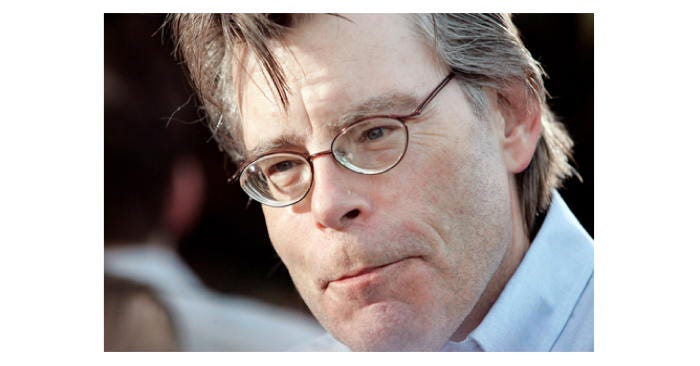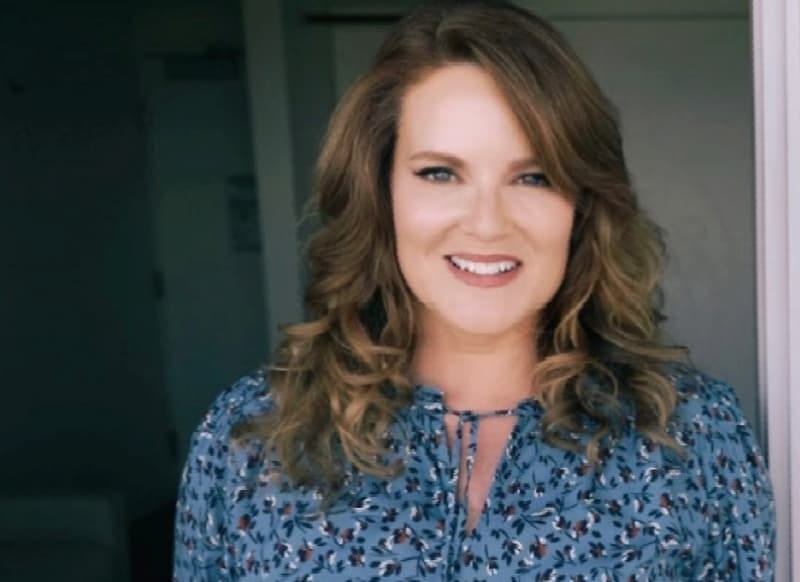Intensity may often be part of the life of creative artists and high ability people, and accompany their trait of high sensitivity.
But living with intensity may mean respecting our needs for mental health and stability, while working with powerful emotions and other forms of intensity, while not trying to suppress or “fix” them.
You can see some forms of intensity in many actors, musicians, and other performers. It is one reason they have such power and presence.
“Intensity is not something I try to do. It’s just kind of the way that I am.” Lance Reddick
[Photo collage at top: red bg from facebook/LanceReddickOfficial; dark bg from article “Lance Reddick died suddenly today & many people slightly ignored this – From the Wire to the recent John Wick movie” By: TB Obwoge, Medium 17 March 2023.]
Jodie Foster once commented about Russell Crowe, “He has that glacier intensity.”
From post: Working With Your Intensity Through Creative Expression.
[Photo: Crowe in “A Beautiful Mind” – see quotes about the real John Forbes Nash, Jr. in article: Creativity and madness: High ability and mental health.]
The book “Enjoying the Gift of Being Uncommon” by Willem Kuipers uses the term Xi for uncommon people, which can stand for eXtra intelligent, or eXtra intense.
High ability people often – even typically – have personality characteristics that include high intensity or excitability.
This is another trait that earlier in my life led me to think I was “crazy” – partly because it was an inner experience I had not read about or heard others talk about, and it is in many ways private. I tended – for a time, at least – to think of it sometimes as being “pathologically” passionate or emotional.
Polish psychiatrist and psychologist Kazimierz Dabrowski developed a theory of personality and emotional development that is often applied toward understanding the psychology of extra intelligent and intense, gifted and talented individuals.
One aspect of his Theory of Positive Disintegration is the concept of unusual intensity and reactivity, which he called overexcitability.
In their book “Living With Intensity: Understanding the Sensitivity, Excitability, and the Emotional Development of Gifted Children, Adolescents, and Adults,” Susan Daniels and Michael M. Piechowski explain, “Overexcitability is a translation of the Polish word which means ‘superstimulatability.’ (It should have been called superexcitability.) …
“Another way of looking at is of being spirited – ‘more intense, sensitive, perceptive, persistent, energetic’…It would be hard to find a person of talent who shows little evidence of any of the five overexcitabilities.”
But they also note that many people may not welcome such traits: “Unfortunately, the stronger these overexcitabilities are, the less peers and teachers welcome them.”
From my article The psychology of creativity: performers and excitabilities.
Hear brief audio excerpt from “Overexcitability with Chris Wells” (founder of The Dąbrowski Center) - a guest interview available to members of the Embracing Intensity Community by Aurora Remember:
~~~~~
Sensitive and Neurodivergent People and Intensity
Psychotherapist Julie Bjelland, LMFT comments:
"Emotional intensity is a common experience for sensitive and neurodivergent individuals, manifesting as heightened feelings that can be overwhelming or difficult to manage.
While emotions are a normal part of being human, the intensity with which we experience them can sometimes feel “too much” or “out of control.”
This is often compounded by how we’re conditioned to view our emotions, particularly if we’ve received messages that our feelings are “too big” or “too dramatic.”
Why Emotional Intensity Happens
For those of us who are sensitive or neurodivergent—emotional intensity can be linked to differences in sensory processing and heightened awareness.
These differences mean we often deeply feel emotions, process them longer, and take in more nuanced information about our environments.
This can lead to states of emotional overwhelm or emotional flooding, where it’s challenging to identify, express, or process what we’re feeling.
In my own journey of navigating the grief after losing my mother, I’ve experienced these emotions in a raw and intense way. It’s been hard to sit with feelings of deep pain without wanting to escape or suppress them.
And I realize how important it is to allow those feelings to exist without judgment or pressure to “move on” quickly.
Practicing self-compassion has been crucial in helping me understand and work through this emotional intensity.
Why Intensity Levels Rise When We Think Something Is Wrong with Us
One of the biggest challenges with emotional intensity is the internalized belief that something is inherently wrong with how we feel.
When we receive messages that our emotions are excessive or need to be controlled, we may begin to fear or resent our own emotional experiences. This fear creates additional stress, making our emotions even more powerful and challenging to manage.
For example, if we believe our sadness is “unacceptable” or our anger is “unjustified,” we may start a cycle of self-criticism that intensifies those very feelings.
This is particularly true for sensitive and neurodivergent people, who may have been told repeatedly that their emotional responses are not appropriate or valid.”
See more in her post “Understanding Emotional Intensity in Sensitive and Neurodivergent People” in the the Highly Sensitive and Neurodivergent Blog.
Julie Bjelland, LMFT 🌈 is a "Highly Sensitive, Autistic, LGBTQ+ Psychotherapist and founder of Sensitive Empowerment with posts, courses, free webinars, podcast episodes, a community program, and more for sensitive & neurodivergent people.
Sensory intensity and overwhelm
One of the qualities of the trait or temperament of high sensitivity, or sensory processing sensitivity, is our intense reactivity to sensations - visual, touch, auditory and more.
This sensitivity can enhance our creative work, but also make us more vulnerable to stress and overwhelm.
The image above (which I created using an AI app) is used for podcast post Highly sensitive people can be more prone to stress and trauma.
The post includes link to free webinar by Julie Bjelland: Sensory Overload & Sensitivity.
~~~~~
“Use your fire without getting burned.”
Aurora Remember describes her site Embracing Intensity:
“Have you ever felt like you’re “too much” or too intense? But at the same time, you may feel like you’re never enough?
“Embracing Intensity is a community, podcast, and other media dedicated to help you use your fire without getting burned!
“Combining real-world experiences and educational knowledge, Embracing Intensity helps you identify and use your neurodivergent strengths, while supporting your challenges.”
Learn about free resources and more at Embracing Intensity.
One of several related podcast episodes:
~ ~ ~
Five sorts of intensity
These Excitabilities are considered to occur in five areas: psychomotor, intellectual, imaginational, emotional and sensual.
Many writers and educators consider the concept to be particularly relevant for gifted and talented people.
Here are some quotes from the video by writer Stephen King, and actors Amanda Bynes and Sandra Bullock about having “teeming brains” – comments that seem to me are about the experience.
Stephen King has said:
“I’ve taken off two months, three months at a time, and, by the end, I get really squirrelly.
“My night life, my dream life, gets extremely populated and crazed.
“It’s as though something in there is running all the time.”
Actor Amanda Bynes, talking about going to college, once said:
“I have such a busy mind and it’s really hard for me to do one thing at a time. … It’s hard for me to sit still.”
See more in my post Developing Creativity: Excitabilities – Our Teeming Brains.
~~~~
Don’t tone it down
In her article (on my TalentDevelop site) Creative People Shouldn’t ‘Tone It Down’, writer, writing coach, teacher, and speaker Cynthia Morris comments,
“I’ve been accused of being ‘too much’ all my life. Too loud, too fast, too smart, too multi-talented, too audacious.
“I’ve never been able to live according to that external standard of ‘just right’. Artists are often ‘too much’. It’s the job of the artist and writer to reflect what they see and feel.
“This expression of their art and talents must be larger than life. The trouble is, our expression doesn’t always jibe with what’s going on in the ‘normal’ world.”
Do you ever “stifle yourself” to more easily get along with that ‘normal’ world?
I certainly do – but it can be an emotionally costly choice, and one that inhibits creative energy and expression.
[Photo above: actor Sarah Bernhardt, 1862–1923.]
~ ~ ~
Using intensity and pain
Cheryl Arutt, Psy.D., a licensed clinical psychologist specializing in creative artist issues among topics, notes that “Creating art has always been a way to channel emotional intensity.”
She points out in a world “where destructive acting out is all too frequent (and meticulously documented and sensationalized on the news and TMZ), sublimating painful feelings by expressing them in the form of artistic expression allows the artist to choose to ‘act out’ in a way that is constructive.”
She adds, “Many creative people carry the belief that their pain is the locus of their creativity, and worry that they will lose their creativity if they work through their inner conflicts or let go of suffering.
“These artists hold onto their pain as if it were a lifeline, even finding ways to enhance it, leading to some patterns of behavior that won’t ‘turn off’ even when they want them to.”
The challenge for creative and intense people, she explains, is “Finding ways to maintain that optimal zone where we are neither under- or over-stimulated” which “allows us to use our minds to respond rather than to react.
“If you are an artist, you are your instrument. The greater access you maintain to yourself, the richer and broader your array of creative tools.”
From one of Dr. Arutt’s guest articles on my site: Affect Regulation and the Creative Artist.
Also see another article of hers: The Artist’s Unconscious.
For more about these qualities of intensity, see the articles:
Excitabilities and Gifted People – an intro by Susan Daniels
Dabrowski Excitabilities – Michael Jackson
and my site: Highly Sensitive.
Also see multiple posts on Intensity on my High Ability site.
~~ ~~~~~~~
Lesley Sword, Director of Gifted & Creative Services Australia, explains that the term overexcitability “conveys the idea that this stimulation of the nervous system is well beyond the usual or average in intensity and duration.”
She notes that “Michael Piechowski, who worked with Dabrowski, explains overexcitabilities as “an abundance of physical, sensual, creative, intellectual and emotional energy that can result in creative endeavours as well as advanced emotional and ethical development in adulthood.
“He says that the overexcitabilities feed, enrich, empower and amplify talent.”
~ ~ ~
Nicole Kidman gave a nice description of what many other actors and other artists experience:
“You live with a lot of complicated emotions as an actor, and they whirl around you and create havoc at times. And yet, as an actor you’re consciously and unconsciously allowing that to happen. ….
“It’s my choice, and I would rather do it this way than live to be 100… Or rather than choosing not to exist within life’s extremities. I’m willing to fly close to the flame.”
[From my Nicole Kidman profile.]
~~~~
Related podcast episodes
Getting out of our heads, working with emotional intensity, and more with Christine Fonseca
Creating to channel emotional intensity - an interview with psychologist Cheryl Arutt
How mental health symptoms can be reframed as positive - Chris Wells on Overexcitability
~ ~ ~ ~














Perfect timing for me on this post! Lately I've really been reflecting on what makes me, at times, intense and excitable. I appreciate this post for exploring this topic and the connection with creativity, thank you!
Im teaching an online course right now, at the University of Colorado, Colorado Springs, for the masters and licensure program and gifted education- Creativity and Giftedness. And this applies directly to one of the modules where
“C”reative people were interviewed. One of them, a family